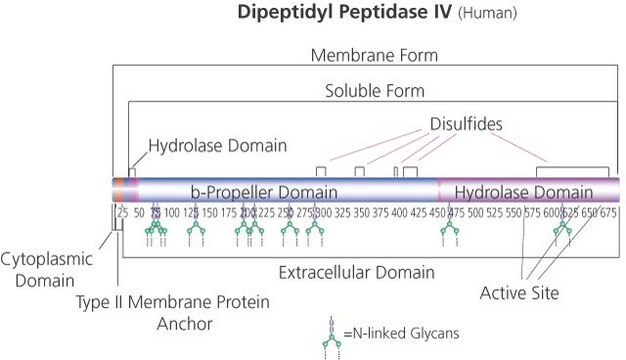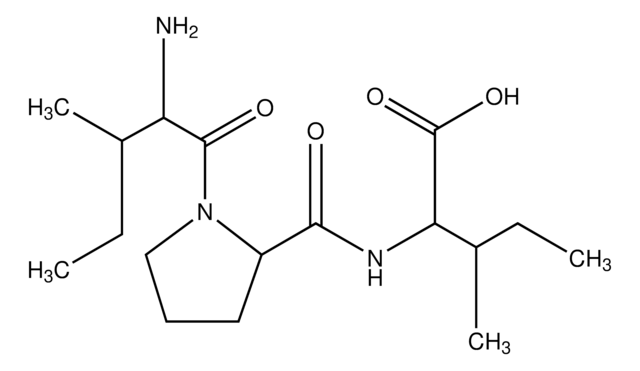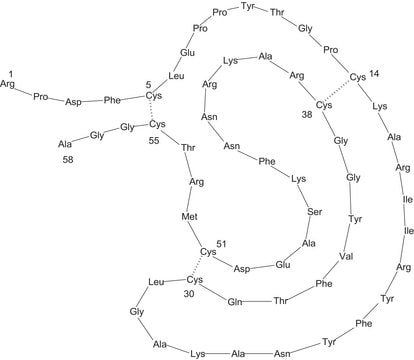D3822
Dipeptidyl Peptidase IV Inhibitor I
Synonym(s):
Diprotin A
Sign Into View Organizational & Contract Pricing
All Photos(1)
About This Item
Empirical Formula (Hill Notation):
C17H31N3O4
Molecular Weight:
341.45
UNSPSC Code:
12352202
NACRES:
NA.77
Recommended Products
General description
Dipeptidyl peptidase IV (DPP IV) is a member of the prolyl-specific proteases family. It is a dimeric type II integral membrane glycoprotein that is broadly expressed in the epithelial and nonepithelial tissues. It is majorly expressed in the kidney and the colon.
Application
Dipeptidyl peptidase IV inhibitor I has been used in acute in vivo studies to assess rapid plasma glucagon-like peptide (GLP-1) responses to specified secretory agents in mice.
Biochem/physiol Actions
Dipeptidyl peptidase IV (DPP IV) functions as a modulator of glucagon-like peptide (GLP-1), insulin-stimulating hormones, and glucose-dependent insulinotropic polypeptide (GIP). It is an essential therapeutic target for type 2 diabetes (T2DM). DPP-4 inhibitors are crucial for maintaining glucose homeostasis by prolonging the activity of GLP-1 and GIP. They also enhance glycemic control for a longer period when compared to early oral hypoglycemics. DPP-4 also acts as a binding protein and a ligand of extracellular factors.
Sequence
Ile-Pro-Ile
Storage Class Code
11 - Combustible Solids
WGK
WGK 3
Flash Point(F)
Not applicable
Flash Point(C)
Not applicable
Certificates of Analysis (COA)
Search for Certificates of Analysis (COA) by entering the products Lot/Batch Number. Lot and Batch Numbers can be found on a product’s label following the words ‘Lot’ or ‘Batch’.
Already Own This Product?
Find documentation for the products that you have recently purchased in the Document Library.
Sebastiano Bruno Solerte et al.
Acta diabetologica, 57(7), 779-783 (2020-06-09)
SARS-CoV-2 causes severe respiratory syndrome (COVID-19) with high mortality due to a direct cytotoxic viral effect and a severe systemic inflammation. We are herein discussing a possible novel therapeutic tool for COVID-19. Virus binds to the cell surface receptor ACE2;
Brandon L Panaro et al.
Molecular metabolism, 37, 100990-100990 (2020-04-13)
Glucagon-like peptide-1 is a nutrient-sensitive hormone secreted from enteroendocrine L cells within the small and large bowel. Although GLP-1 levels rise rapidly in response to food ingestion, the greatest density of L cells is localized to the distal small bowel
Our team of scientists has experience in all areas of research including Life Science, Material Science, Chemical Synthesis, Chromatography, Analytical and many others.
Contact Technical Service






